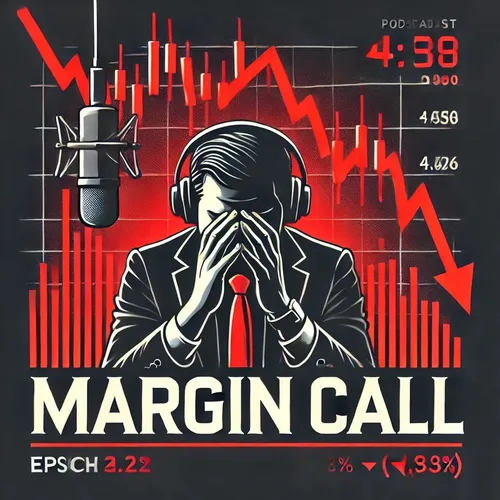Margin Calls: Crucial in Short and Leveraged Trading Strategies, Amplify Risks and Losses
- Author
- Quiet. Please
- Published
- Sat 12 Jul 2025
- Episode Link
- https://www.spreaker.com/episode/margin-calls-crucial-in-short-and-leveraged-trading-strategies-amplify-risks-and-losses--66954087
Margin calls play a crucial role in both long and short trading strategies, particularly when traders use leverage to amplify their positions. When listeners hear the term “margin call,” it refers to a broker’s demand that an investor deposit additional funds or securities to bring a margin account up to the required minimum level. This situation often arises when the value of the investor’s holdings declines, causing the equity in the account to fall below the maintenance margin. For those holding short positions, margin calls carry heightened risk because losses can, in theory, be unlimited if the underlying asset rises sharply.
Short selling involves borrowing shares of a stock from a broker and selling them on the open market with the intention of buying them back later at a lower price to return to the lender, profiting from the price difference. If the stock price rises instead of falling, the short seller faces potentially steep losses and must put up additional collateral if a margin call occurs. According to KGI Securities, short sellers need a margin account and must provide a margin deposit to cover potential losses. If the losses mount and the account equity drops below the maintenance level, the broker can issue a margin call, requiring the short seller to deposit more funds or risk having their position forcibly closed.
The mechanics of margin calls for short positions are especially unforgiving during sudden market rallies or short squeezes. A short squeeze happens when a heavily shorted stock experiences a sharp price increase, often driven by unexpected news or coordinated buying. As prices spike, brokers issue margin calls to short sellers whose losses are growing. Those unable to meet the margin call may see their positions automatically closed by their broker, buying back shares at elevated prices and fueling further upward momentum in the stock price.
Benzinga notes that the potential for unlimited loss in short selling is a significant difference from holding a long position, where the maximum loss is typically limited to the amount invested. For short sellers, a steady rise in the underlying shares means mounting losses, higher margin requirements, and the strong possibility of a margin call if they don’t add collateral promptly.
Trading strategies using derivatives like synthetic futures can also expose traders to margin calls. Strike Money explains that synthetic short futures are created by selling a call and buying a put with the same strike price and expiration, replicating the payoff of a short futures contract. While this approach can sometimes offer lower margin requirements than outright shorting, the risk of loss and associated margin calls remains significant if the market moves against the position. Active management and accurate risk assessment become essential, as even small adverse price movements can result in significant margin calls.
Options strategies sometimes help manage risk, but selling “naked” calls—where a trader is short an option without owning the underlying asset—can lead to substantial margin calls if those options move deep in the money. Framework Investing highlights that margin accounts are mandatory for such strategies, and brokers typically require a substantial amount of capital to approve short call positions because the risk profile is so high.
Ultimately, short positions in trouble can trigger cascading effects throughout the market. As brokers enforce margin requirements, forced covering can drive prices even higher, further straining other short sellers. This feedback loop was witnessed in several high-profile episodes, most famously during the GameStop frenzy, where short sellers faced massive margin calls and were compelled to exit at huge losses, sending the stock price skyrocketing.
Understanding the nature of margin requirements and the risks of short positions is fundamental for...
